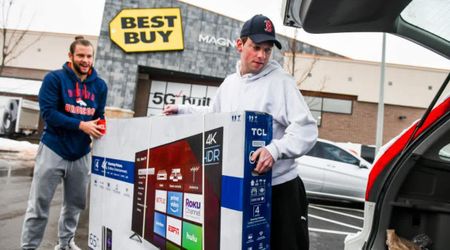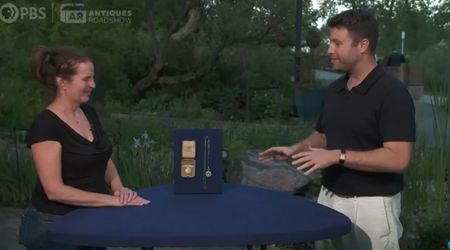Woman receives a FedEx package she never ordered. What she noticed inside could save many others.

The ability to complete transactions ranging from bill payments to bank transfers with a few clicks online has increased convenience but has also exposed people to the risk of scammers lurking around. A woman almost fell for another innovative scheme deployed by cybercriminals but was saved by her presence of mind and assistance from TikTok. The scammers used a sophisticated ploy involving the name of a reputed global logistics firm such as FedEx.
But thankfully, TikTok user Tammy (@thefoxypineapple) has always been meticulous about the things she orders online. She always keeps track what she has ordered and when they’re supposed to come. So when a FedEx package arrives unexpectedly, it’s natural for her to be suspicious. Inside the package, she found a make-up brush with a QR code attached to it. Normally, one would be curious and scan the code, but that’s where Tammy was smart.
She had seen a TikTok video recently that showed how a hacker will get complete access to your phone, your personal information, and your bank accounts, if you scan that QR code. “I just got a scam in the mail and if it wasn’t for TikTok, I totally would’ve fallen for it,” she said in a subsequent video she made about the matter as per Daily Dot. It garnered more than 3.6 million views on TikTok.
@thefoxypineapple Watch this and do not scan any QR codes you receive! #scam #scammeralert #qrcodes #qrcodescam #mailscam #scammers #scammersbelike #fyp #viral #becareful #phonescam #hacked ♬ original sound - Tammy
QR code scams are a thing of the present and the practice is called quishing. According to the FBI, $150 million was reported in monetary losses via quishing. Clearly, the practice is quite popular among scammers and there are a lot of different ways one can go about it. What Tammy experienced was just one of the methods employed by such criminals. A recent report on ABC News explained how scammers are using parking lot QR codes to rob people of their money and personal information. When entering a parking lot, one can often see a QR code that is there for payments. Normally, scanning that code helps one pay for their parking. However, some scammers can put a fake QR code over the original. Once it is scanned, they get access to the phone.
Turns out that fake QR codes at parking meters are not that rare. According to USA Today, a Florida resident was informed of fraudulent activity by his bank after he scanned a parking meter QR code and paid $1.25. Thankfully, no further fraudulent financial activities were reported from his account after the incident.
The Government has also taken measures to help the prevention of such scams. A blog posted earlier this year by the Social Security Administration explained everything one should cross-check before scanning a QR code. “Scammers may use tactics that mirror a legitimate QR code. Take a moment to examine the QR code closely. Look for any signs of tampering, unusual colors, or misspellings. If something seems suspicious, it’s best to avoid scanning the QR code,” it read in one part.





















